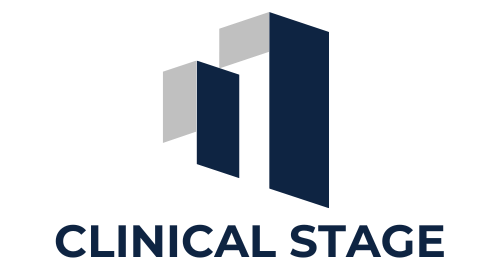Collaborations and Partnerships in Clinical Trials
In the dynamic and ever-evolving landscape of clinical research, collaborations and partnerships play a pivotal role in driving innovation and achieving successful outcomes. By pooling resources, expertise, and knowledge, stakeholders can overcome challenges that may be insurmountable when working in isolation. These collaborative efforts not only accelerate the development and testing of new therapies but also enhance the overall efficiency and effectiveness of clinical trials.
Collaborations and partnerships are essential for several reasons. They facilitate access to a diverse pool of patients, enable the sharing of critical data and resources, and foster the integration of multidisciplinary expertise. By working together, academic institutions, pharmaceutical companies, contract research organizations (CROs), and regulatory bodies can streamline the clinical trial process, reduce costs, and improve the chances of regulatory approval. Moreover, these partnerships often lead to groundbreaking discoveries and advancements that can significantly impact patient care and outcomes.
Collaborative models in clinical trials are diverse and can take many forms. These include public-private partnerships, consortia, academic-industry collaborations, and international research networks. Each model brings unique strengths and benefits, tailored to the specific needs and goals of the research. Public-private partnerships, for instance, leverage the strengths of both sectors to address complex health challenges, while academic-industry collaborations combine cutting-edge research with practical applications. Understanding these various collaboration types is crucial for stakeholders looking to maximize the impact of their clinical research efforts.
This blog aims to explore the multifaceted nature of collaborations and partnerships in clinical trials. We will delve into the different models of collaboration, highlight successful case studies, and discuss the benefits and challenges associated with these partnerships. Additionally, we will provide insights into how Notable Labs has successfully navigated and leveraged collaborative efforts to advance clinical research. By examining these aspects, we hope to offer valuable guidance for researchers, investors, and other stakeholders interested in fostering effective collaborations in the realm of clinical trials.
Types of Collaborations in Clinical Trials
Collaborations in clinical trials can be categorized into several key types, each offering unique advantages and opportunities for advancing medical research. Here, we will explore three primary types: Academic-Industry Partnerships, Public-Private Partnerships (PPPs), and Multi-Sponsor and Consortia Collaborations.
Academic-Industry Partnerships
Academic-industry partnerships bring together the innovative research capabilities of academic institutions with the practical, market-driven focus of industry players. These collaborations leverage the strengths of both sectors to accelerate the development of new treatments and therapies.
Advantages:
- Innovative Research: Academic institutions often lead in cutting-edge research, providing novel insights and groundbreaking discoveries.
- Resource Sharing: Industry partners contribute significant financial resources, infrastructure, and expertise in drug development and commercialization.
- Access to Diverse Expertise: These partnerships enable the integration of diverse skill sets, from academic researchers to industry professionals, fostering a multidisciplinary approach to problem-solving.
Challenges:
- Differing Objectives: Aligning the goals and timelines of academic and industry partners can be challenging, as academic research may focus on long-term scientific inquiry, while industry seeks faster commercialization.
- Intellectual Property (IP) Issues: Managing IP rights and ensuring fair distribution of benefits can be complex in such collaborations.
Public-Private Partnerships (PPPs)
Public-private partnerships (PPPs) involve collaborations between government entities, non-profit organizations, and private sector companies. These partnerships aim to address large-scale public health challenges by combining resources and expertise from multiple sectors.
Advantages:
- Large-Scale Impact: PPPs can tackle significant health issues, such as infectious disease outbreaks or chronic disease management, by pooling resources and expertise.
- Funding Opportunities: Government and non-profit organizations often provide funding and support that can de-risk private sector investments.
- Regulatory Support: Public partners can facilitate smoother regulatory pathways, enhancing the likelihood of successful approvals and implementation.
Challenges:
- Complex Coordination: Managing and coordinating efforts across diverse organizations with varying missions and operational styles can be difficult.
- Sustainability: Ensuring long-term sustainability and commitment from all partners is crucial for the success of PPPs.
Multi-Sponsor and Consortia Collaborations
Multi-sponsor and consortia collaborations involve multiple stakeholders, including pharmaceutical companies, research institutions, and non-profit organizations, working together on a common research goal. These collaborations often focus on pre-competitive research, where findings are shared openly to advance the entire field.
Advantages:
- Shared Risk and Cost: By distributing the financial burden and risk among multiple sponsors, these collaborations can undertake ambitious projects that might be too risky for a single entity.
- Knowledge Sharing: Consortia promote transparency and open data sharing, accelerating scientific progress and innovation.
- Comprehensive Expertise: Bringing together a wide range of expertise and perspectives leads to more robust and comprehensive research outcomes.
Challenges:
- Governance: Establishing clear governance structures and decision-making processes is essential to manage the interests and contributions of all partners effectively.
- Alignment of Goals: Ensuring that all participants have aligned objectives and are committed to the consortium's success can be challenging.
Case Studies and Success Stories
Case Study 1: Academic-Industry Partnership
An exemplary case of an academic-industry partnership is the collaboration between Notable Labs and a leading university to develop a novel cancer treatment. This partnership leveraged the university's cutting-edge research on tumor biology and Notable Labs' expertise in precision medicine. By combining forces, the team was able to accelerate the development of a promising therapeutic, advancing it from preclinical studies to early-phase clinical trials within a remarkably short timeframe. This collaboration not only showcased the potential of academic-industry partnerships but also highlighted the importance of shared vision and seamless communication.
Case Study 2: Public-Private Partnership
A successful public-private partnership can be seen in the collaboration between global health organizations and pharmaceutical companies to combat neglected tropical diseases. This PPP pooled resources from governments, non-profits, and industry to develop and distribute treatments for diseases that primarily affect low-income populations. By aligning the strengths of each partner, this initiative successfully brought life-saving treatments to millions of people, demonstrating the profound impact that well-coordinated public-private partnerships can have on global health.
Case Study 3: Multi-Sponsor Consortium
An impactful example of a multi-sponsor consortium is the International Cancer Genome Consortium (ICGC), which brings together researchers from around the world to map the genomes of various cancer types. This consortium, involving multiple academic institutions, pharmaceutical companies, and non-profits, has generated an unprecedented wealth of data, accelerating our understanding of cancer biology. By sharing data openly and collaboratively, the ICGC has paved the way for new diagnostic tools and targeted therapies, illustrating the power of collective effort in tackling complex diseases.
Benefits of Collaborations and Partnerships
Collaborations and partnerships in clinical trials offer numerous advantages that enhance the overall effectiveness and success of research initiatives. By leveraging the strengths of multiple stakeholders, these collaborative efforts lead to more innovative solutions, efficient processes, and better patient outcomes. Here are some key benefits:
Access to Diverse Expertise and Resources
Collaborations bring together a wide range of expertise and resources that might not be available within a single organization. This diversity fosters a multidisciplinary approach to research, combining different perspectives, skills, and technologies to address complex challenges.
- Multidisciplinary Expertise: Academic institutions provide cutting-edge scientific research, industry partners offer practical experience in drug development and commercialization, and government or non-profit organizations contribute public health insights and regulatory knowledge.
- Resource Sharing: By pooling financial resources, infrastructure, and technological capabilities, collaborators can undertake larger and more ambitious projects than they could individually. This sharing of resources reduces duplication of effort and accelerates the research process.
Enhanced Trial Efficiency and Cost-Sharing
Collaborative efforts improve the efficiency of clinical trials by streamlining processes, sharing costs, and reducing the time needed to bring new therapies to market.
- Streamlined Processes: Collaborations often lead to the standardization of protocols, data collection methods, and trial management practices. This standardization enhances trial efficiency and reduces administrative burdens.
- Cost Sharing: By distributing the financial burden among multiple partners, collaborations make it possible to conduct large-scale trials that might be prohibitively expensive for a single entity. This cost-sharing also allows for better allocation of funds towards innovative research and patient care.
Increased Patient Access and Recruitment
One of the most significant challenges in clinical trials is patient recruitment and retention. Collaborations can significantly enhance patient access and recruitment efforts, ensuring that trials are adequately powered and representative of diverse populations.
- Broader Patient Networks: Collaborations with multiple stakeholders, including hospitals, clinics, and patient advocacy groups, expand the reach and network for patient recruitment. This broader reach helps in enrolling a diverse and representative patient population.
- Improved Patient Engagement: Collaborative efforts often include patient-centric approaches that prioritize patient needs and experiences. This focus on patient engagement leads to higher retention rates and better overall trial outcomes.
- Global Reach: International collaborations enable the inclusion of patients from different geographic regions, ensuring that trial results are more generalizable and applicable to a global population. This global reach is particularly important for understanding the efficacy and safety of treatments across diverse demographic groups.
Key Elements of Successful Collaborations
For collaborations in clinical trials to be successful, certain key elements must be in place. These elements ensure that all partners are aligned, communication is seamless, and decision-making processes are robust. Here, we outline the essential components that contribute to the success of collaborative efforts.
Clear Goals and Shared Objectives
Establishing clear goals and shared objectives is foundational for any successful collaboration. All partners must have a mutual understanding of the project’s aims and how their individual contributions will support these goals.
- Aligned Vision: Partners need to develop a unified vision and set of objectives that reflect the interests and strengths of each stakeholder. This alignment helps in maintaining focus and direction throughout the project.
- Specific Milestones: Defining specific, measurable milestones and deliverables ensures that progress can be tracked and assessed objectively. These milestones should be agreed upon at the outset and revisited regularly to keep the project on track.
- Flexibility: While having clear goals is crucial, it’s equally important to remain flexible and adaptive to changing circumstances or new insights that may arise during the research process.
Effective Communication and Coordination
Effective communication and coordination are vital for managing the complexities of collaborative clinical trials. Clear, consistent communication helps to build trust, resolve conflicts, and ensure that all partners are informed and engaged.
- Regular Meetings: Scheduling regular meetings and check-ins helps to keep all partners updated on progress, address any issues promptly, and foster a collaborative environment. These meetings can be virtual or in-person, depending on the needs and preferences of the team.
- Transparent Reporting: Maintaining transparent reporting mechanisms ensures that all partners have access to up-to-date information on the trial’s progress, including any challenges or changes. This transparency is essential for maintaining trust and accountability.
- Designated Communication Channels: Establishing designated communication channels and protocols helps to streamline information flow and ensures that all partners know how and when to communicate important updates or concerns.
Robust Governance and Decision-Making Structures
Robust governance and decision-making structures are essential for managing collaborative efforts effectively. Clear governance frameworks help to delineate roles, responsibilities, and processes for making critical decisions.
- Defined Roles and Responsibilities: Clearly defining the roles and responsibilities of each partner helps to avoid overlap, confusion, and gaps in accountability. Each partner should understand their specific duties and how they contribute to the overall project.
- Decision-Making Frameworks: Establishing decision-making frameworks and processes ensures that decisions are made efficiently and inclusively. These frameworks should outline who has authority to make certain decisions and how consensus will be reached among partners.
- Conflict Resolution Mechanisms: Implementing conflict resolution mechanisms is crucial for addressing any disputes that may arise during the collaboration. These mechanisms provide a structured approach for resolving conflicts fairly and promptly, ensuring that the project remains on track.
Challenges in Collaborations and How to Overcome Them
While collaborations in clinical trials offer numerous benefits, they also come with their own set of challenges. Effectively managing these challenges is crucial for the success of any collaborative effort. Here, we discuss some common obstacles and strategies to overcome them.
Managing Conflicting Interests and Priorities
One of the primary challenges in collaborations is managing conflicting interests and priorities among partners. Different stakeholders may have varying goals, timelines, and expectations, which can lead to misunderstandings or disagreements.
Strategies to Overcome:
- Alignment Workshops: Conducting alignment workshops at the beginning of the collaboration can help partners articulate their goals and find common ground. These workshops can facilitate open dialogue and help establish shared objectives.
- Mediation and Facilitation: Employing neutral third-party mediators or facilitators can help resolve conflicts and keep the collaboration on track. These professionals can provide objective perspectives and assist in finding mutually beneficial solutions.
- Clear Contracts: Drafting clear, detailed contracts that outline the roles, responsibilities, and expectations of each partner can prevent conflicts. These agreements should include provisions for conflict resolution and mechanisms for addressing changes in priorities.
Ensuring Data Sharing and Intellectual Property Rights
Data sharing and intellectual property (IP) rights are critical aspects of collaborations, particularly in clinical trials where sensitive data and proprietary technologies are involved. Ensuring that all partners feel secure in sharing their data and that IP rights are respected can be challenging.
Strategies to Overcome:
- Data Management Plans: Developing comprehensive data management plans that specify how data will be collected, stored, shared, and protected is essential. These plans should address data ownership, access rights, and confidentiality measures.
- IP Agreements: Establishing clear IP agreements at the outset of the collaboration can help manage expectations and protect the interests of all parties. These agreements should detail how IP will be handled, including provisions for joint ownership, licensing, and commercialization.
- Secure Platforms: Utilizing secure data sharing platforms and technologies ensures that sensitive information is protected. Implementing robust cybersecurity measures can help maintain data integrity and confidentiality.
Navigating Regulatory and Compliance Issues
Regulatory and compliance issues pose significant challenges in clinical trial collaborations, especially when multiple jurisdictions are involved. Navigating these complexities requires careful planning and adherence to various regulatory standards.
Strategies to Overcome:
- Regulatory Expertise: Engaging regulatory experts who understand the requirements of different jurisdictions can help ensure compliance. These experts can guide partners through the regulatory landscape and assist in preparing necessary documentation.
- Harmonized Protocols: Developing harmonized protocols that meet the regulatory standards of all involved regions can streamline the approval process and avoid delays. Collaboration with regulatory bodies during protocol development can facilitate this harmonization.
- Continuous Monitoring: Implementing continuous monitoring and auditing processes to ensure ongoing compliance with regulatory requirements is crucial. Regular reviews and updates of protocols and procedures can help address any compliance issues promptly.
Case Studies of Successful Collaborations
Successful collaborations in clinical trials are exemplified by several notable case studies. These examples illustrate the power of partnerships in advancing medical research and improving patient outcomes. Here, we explore three impactful case studies, including Notable Labs' contributions to oncology research.
Case Study 1: Academic-Industry Partnership in Oncology Research
One exemplary academic-industry partnership involves Notable Labs and a leading university's cancer research center. This collaboration focused on developing a novel therapeutic for a particularly aggressive form of cancer.
Overview:
- Partners: Notable Labs and the university's cancer research center.
- Objective: To develop and test a novel oncology drug that targets specific genetic mutations found in aggressive cancer types.
- Approach: The partnership combined the university’s cutting-edge research on tumor biology with Notable Labs' expertise in precision medicine and clinical trial design.
Outcomes:
- Accelerated Development: The collaboration enabled rapid progression from preclinical studies to early-phase clinical trials, significantly shortening the development timeline.
- Innovative Insights: The integration of academic research and industry expertise led to innovative insights and a deeper understanding of the drug's mechanism of action.
- Regulatory Milestones: The partnership successfully navigated regulatory hurdles, achieving several important milestones that brought the therapy closer to market approval.
Case Study 2: Public-Private Partnership for Rare Disease Trials
Public-private partnerships (PPPs) have been instrumental in addressing the challenges associated with rare disease research. One notable example is the collaboration between a national health agency, a non-profit organization dedicated to rare diseases, and a pharmaceutical company.
Overview:
- Partners: National health agency, rare disease non-profit organization, and a pharmaceutical company.
- Objective: To develop and conduct clinical trials for a treatment targeting a rare genetic disorder.
- Approach: The PPP leveraged the resources and expertise of each partner to design and execute comprehensive clinical trials.
Outcomes:
- Funding and Support: The public sector provided funding and regulatory support, while the non-profit organization facilitated patient recruitment and advocacy, and the pharmaceutical company managed the clinical trial logistics and data analysis.
- Patient Impact: The collaboration led to the successful development of a new treatment, offering hope to patients with limited therapeutic options.
- Policy Influence: The partnership also influenced policy changes, encouraging more support and resources for rare disease research.
Case Study 3: Multi-Sponsor Collaboration for COVID-19 Vaccine Development
The global response to the COVID-19 pandemic showcased the power of multi-sponsor collaborations in developing vaccines at an unprecedented pace. One standout example is the collaboration among several pharmaceutical companies, academic institutions, and international health organizations.
Overview:
- Partners: Multiple pharmaceutical companies, academic institutions, and international health organizations.
- Objective: To develop, test, and distribute safe and effective COVID-19 vaccines.
- Approach: This collaboration pooled resources, shared data openly, and coordinated efforts across multiple research and development sites worldwide.
Outcomes:
- Rapid Development: The collaboration led to the rapid development and approval of multiple COVID-19 vaccines within a year, a timeline previously considered impossible.
- Global Distribution: By working together, the partners ensured the vaccines were produced and distributed on a global scale, reaching diverse populations quickly.
- Scientific Advancements: The open sharing of data and findings accelerated scientific understanding of the virus and informed ongoing research and development.
Future Trends in Clinical Trial Collaborations
As the landscape of clinical research continues to evolve, several emerging trends are set to shape the future of collaborations in clinical trials. These trends highlight the increasing involvement of diverse stakeholders, the expansion of global partnerships, and the transformative impact of digital technologies on collaborative efforts.
Increasing Role of Patient Advocacy Groups
Patient advocacy groups are becoming more influential in clinical trial collaborations, playing a critical role in shaping research priorities, improving patient recruitment, and ensuring patient-centric approaches.
Key Trends:
- Patient-Centric Research: Advocacy groups are pushing for research that addresses the specific needs and preferences of patients, leading to more relevant and impactful outcomes.
- Enhanced Recruitment: These groups have deep connections with patient communities, making them invaluable partners in patient recruitment efforts. Their involvement helps build trust and encourages participation in clinical trials.
- Funding and Support: Patient advocacy organizations often provide funding and support for research initiatives, helping to drive forward studies that might otherwise lack sufficient resources.
Impact:
- Improved Patient Outcomes: The involvement of advocacy groups ensures that patient perspectives are considered throughout the research process, leading to treatments that better meet the needs of those they aim to help.
- Increased Awareness: Advocacy groups help raise awareness about clinical trials, educating patients about the importance of participating in research and the potential benefits.
Expansion of Global Collaborations and Partnerships
Global collaborations are becoming increasingly common as researchers seek to address health challenges that transcend national borders. These partnerships enable the pooling of international expertise, resources, and patient populations.
Key Trends:
- Cross-Border Research: Researchers are collaborating across countries and continents to conduct large-scale studies that provide more comprehensive and generalizable results.
- Harmonization of Standards: Efforts are underway to harmonize regulatory standards and clinical trial protocols across different regions, facilitating smoother collaboration and faster approvals.
- Diverse Patient Populations: Global collaborations allow for the inclusion of diverse patient populations, ensuring that research findings are applicable to a broader range of individuals.
Impact:
- Accelerated Innovation: By leveraging global expertise and resources, these collaborations can accelerate the development of new treatments and therapies.
- Enhanced Generalizability: Studies that include diverse populations produce findings that are more representative and applicable to different demographic groups.
Impact of Digital Platforms on Collaboration Dynamics
Digital platforms are revolutionizing the way collaborations are conducted, offering new tools and technologies that enhance communication, data sharing, and project management.
Key Trends:
- Virtual Collaboration Tools: Platforms that enable virtual meetings, real-time communication, and collaborative document editing are making it easier for researchers to work together, regardless of geographic location.
- Data Sharing and Analytics: Advanced digital platforms facilitate secure and efficient data sharing, allowing researchers to access and analyze large datasets collaboratively.
- Project Management Software: Tools that streamline project management and tracking help ensure that collaborative efforts are well-coordinated and stay on schedule.
Impact:
- Increased Efficiency: Digital platforms reduce the logistical challenges of collaboration, making it easier and faster to coordinate efforts and share information.
- Enhanced Data Security: Advanced security features ensure that sensitive data is protected, maintaining the integrity and confidentiality of research findings.
- Greater Flexibility: Researchers can collaborate more flexibly, working together in real-time from different locations and time zones.
Strategies for Building Effective Collaborations
Building effective collaborations in clinical trials requires strategic planning and ongoing management. By identifying and engaging the right partners, establishing clear collaboration frameworks, and continuously monitoring and evaluating outcomes, stakeholders can create successful partnerships that drive medical innovation and improve patient outcomes.
Identifying and Engaging Potential Partners
The first step in building effective collaborations is identifying and engaging potential partners who can bring complementary expertise, resources, and perspectives to the project.
Key Strategies:
- Needs Assessment: Conduct a thorough assessment of the project’s needs and objectives to determine the types of partners required. This might include academic researchers, industry experts, regulatory bodies, patient advocacy groups, or international organizations.
- Networking: Leverage professional networks, industry conferences, and online platforms to identify potential partners. Building relationships with key stakeholders in the field can open doors to valuable collaborations.
- Reputation and Track Record: Evaluate the reputation and track record of potential partners to ensure they have a history of successful collaborations and can deliver on their commitments.
- Engagement: Approach potential partners with a clear value proposition, outlining the benefits of the collaboration for all parties involved. Effective engagement strategies include initial meetings, detailed presentations, and collaborative planning sessions.
Establishing Clear Collaboration Frameworks
Once partners are identified, it’s essential to establish clear collaboration frameworks that define roles, responsibilities, and processes for managing the partnership.
Key Strategies:
- Memorandums of Understanding (MOUs): Develop MOUs or partnership agreements that outline the objectives, roles, responsibilities, and expectations of each partner. These documents serve as a reference point throughout the collaboration.
- Governance Structures: Establish robust governance structures to oversee the collaboration. This includes setting up steering committees, project management teams, and regular review meetings to ensure accountability and coordination.
- Communication Plans: Develop comprehensive communication plans that specify how information will be shared, who will be responsible for communication, and the frequency of updates. Clear communication channels help prevent misunderstandings and keep all partners aligned.
- Conflict Resolution Mechanisms: Implement mechanisms for resolving conflicts and addressing issues that may arise during the collaboration. This might include designated mediators, structured negotiation processes, and escalation procedures.
Monitoring and Evaluating Collaboration Outcomes
Continuous monitoring and evaluation are critical to ensuring that collaborations remain effective and achieve their intended goals. Regular assessment helps identify areas for improvement and ensures that the partnership delivers value to all stakeholders.
Key Strategies:
- Performance Metrics: Establish key performance indicators (KPIs) and metrics to measure the success of the collaboration. These might include milestones achieved, patient recruitment rates, data quality, and overall project progress.
- Regular Reviews: Conduct regular review meetings to assess the status of the collaboration, address any challenges, and make necessary adjustments. These reviews should involve all partners and provide a platform for open feedback and discussion.
- Feedback Loops: Create feedback loops that allow partners to share their experiences and insights throughout the collaboration. This feedback can inform continuous improvement and enhance the overall effectiveness of the partnership.
- Impact Assessment: Evaluate the long-term impact of the collaboration on clinical research and patient outcomes. Assessing the tangible benefits and contributions of the partnership helps demonstrate its value and guides future collaborative efforts.
Recap of the importance and benefits of collaborations in clinical trials
Building effective collaborations in clinical trials requires strategic planning and ongoing management. By identifying and engaging the right partners, establishing clear collaboration frameworks, and continuously monitoring and evaluating outcomes, stakeholders can create successful partnerships that drive medical innovation and improve patient outcomes.
The first step in building effective collaborations is identifying and engaging potential partners who can bring complementary expertise, resources, and perspectives to the project.
Key Strategies:
- Needs Assessment: Conduct a thorough assessment of the project’s needs and objectives to determine the types of partners required. This might include academic researchers, industry experts, regulatory bodies, patient advocacy groups, or international organizations.
- Networking: Leverage professional networks, industry conferences, and online platforms to identify potential partners. Building relationships with key stakeholders in the field can open doors to valuable collaborations.
- Reputation and Track Record: Evaluate the reputation and track record of potential partners to ensure they have a history of successful collaborations and can deliver on their commitments.
- Engagement: Approach potential partners with a clear value proposition, outlining the benefits of the collaboration for all parties involved. Effective engagement strategies include initial meetings, detailed presentations, and collaborative planning sessions.
Once partners are identified, it’s essential to establish clear collaboration frameworks that define roles, responsibilities, and processes for managing the partnership.
Key Strategies:
- Memorandums of Understanding (MOUs): Develop MOUs or partnership agreements that outline the objectives, roles, responsibilities, and expectations of each partner. These documents serve as a reference point throughout the collaboration.
- Governance Structures: Establish robust governance structures to oversee the collaboration. This includes setting up steering committees, project management teams, and regular review meetings to ensure accountability and coordination.
- Communication Plans: Develop comprehensive communication plans that specify how information will be shared, who will be responsible for communication, and the frequency of updates. Clear communication channels help prevent misunderstandings and keep all partners aligned.
- Conflict Resolution Mechanisms: Implement mechanisms for resolving conflicts and addressing issues that may arise during the collaboration. This might include designated mediators, structured negotiation processes, and escalation procedures.
Continuous monitoring and evaluation are critical to ensuring that collaborations remain effective and achieve their intended goals. Regular assessment helps identify areas for improvement and ensures that the partnership delivers value to all stakeholders.
Key Strategies:
- Performance Metrics: Establish key performance indicators (KPIs) and metrics to measure the success of the collaboration. These might include milestones achieved, patient recruitment rates, data quality, and overall project progress.
- Regular Reviews: Conduct regular review meetings to assess the status of the collaboration, address any challenges, and make necessary adjustments. These reviews should involve all partners and provide a platform for open feedback and discussion.
- Feedback Loops: Create feedback loops that allow partners to share their experiences and insights throughout the collaboration. This feedback can inform continuous improvement and enhance the overall effectiveness of the partnership.
- Impact Assessment: Evaluate the long-term impact of the collaboration on clinical research and patient outcomes. Assessing the tangible benefits and contributions of the partnership helps demonstrate its value and guides future collaborative efforts.










